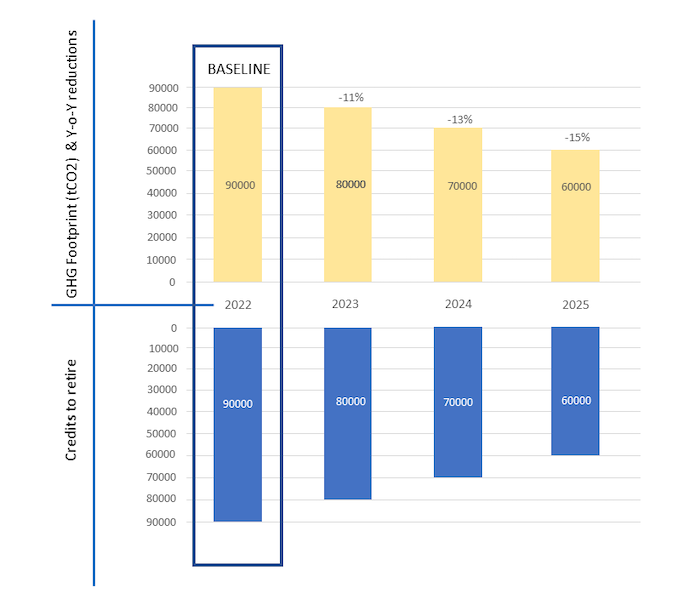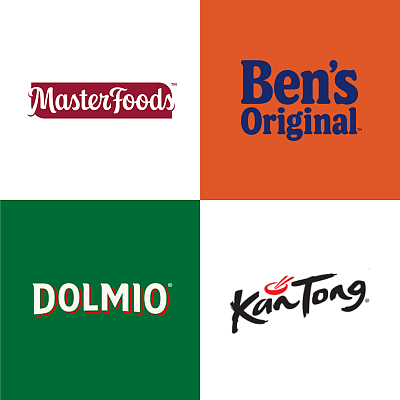Mars Carbon Neutral Brands
Carbon neutral brands contribute to Mars Net Zero by 2050 commitment
Mars is committed to achieving net zero greenhouse gas(Opens a new window) (GHG) emissions in our full value chain by 2050 (including all scope 3 emissions such as those created by suppliers and customers), aligning with the most ambitious aim of the Paris Agreement to limit global temperature rises to 1.5 °C. As Mars continues its efforts towards Net Zero by 2050, some products within the broader Mars portfolio have committed to go carbon-neutral certification for the products. Mars Bar in the UK, Ireland, and Canada and Kitten and Puppy Growth Programs from the ROYAL CANIN® brand are some of the first products to undergo this certification.
What does it mean for a Mars product to be carbon neutral?
Carbon neutrality is a state in which human activities result in no net effect on the climate system as defined by Intergovernmental Panel on Climate Change (IPCC). For a product, this is achieved by calculating the GHG footprint through a life cycle assessment and reducing it to zero through a combination of reduction/efficiency measures within the operations and using carbon credits to offset the remaining emissions. For a product to achieve and maintain carbon neutrality in a specific time, the entire footprint of the product for that time period must be offset with carbon credits.
Step 1: Calculate the product’s GHG footprint
Mars uses the cradle-to-grave approach to calculate the footprint of a product for carbon neutral certification:
- Cradle-to-Grave: The GHG emission for the product’s entire life cycle from the extraction of its raw materials to the emissions created during its disposal. Cradle-to-grave is generally used to certify business-to-consumer (B2C) products.
Step 2: Reduce the footprint of the product
Emission reduction activities can occur at the company’s operations, upstream in the value chain, or downstream of the production of the product. Common strategies for reduction efforts include reducing the footprint of ingredients through reformulation, stopping deforestation, or using climate-smart agriculture; reducing logistics emissions; using renewable energy; and reducing waste. Emission reduction activities often require business transformation and engagement with suppliers several tiers up the value chain and can take several years to deliver measurable emission reductions. After any reductions are achieved, a product’s carbon footprint must be recalculated to demonstrate the impact of emissions reductions.
Step 3: Offset emissions with carbon credits
After initiating emission reduction activities, to achieve carbon neutrality Mars must offset all emissions created by that product in the relevant time period with carbon credits.
What is a carbon credit?
A carbon credit is a certified transferrable instrument that represents an emission reduction, avoidance or removal of one metric ton of greenhouse gas (GHG) emissions. After issuance of a carbon credit, the eventual owner can then later permanently retire it against a claim – meaning it cannot be reused.
In addition to GHG emission benefits, these projects can have other benefits such as protecting ecosystems, enhancing biodiversity, providing job opportunities, supporting farmers, and empowering communities.
Mars purchases removal credits only. Removal credits come from projects or activities that absorb or pull carbon from the atmosphere. The projects underlying these carbon credits are validated and verified according to internationally known standards such as the Gold Standard, Verified Carbon Standard, and American Carbon Registry, amongst others. and are retired on third-party registries such as Impact, Verra and ACR.
This assures that the carbon credits we use are real, additional (beyond business-as-usual activities), measurable and permanent. In addition to the registries, Mars has a stringent due-diligence process to measure these projects' environmental, carbon and social impact.

Image A: Illustrative example of GHG Footprint Y-o-Y reductions and carbon credits to be retired to achieve and maintain carbon neutral certification in accordance with the PAS 2060:2014 standard.
Step 4: Carbon neutral certification
Carbon neutral certification of a product is verified through the PAS 2060:2014 Standard for Carbon Neutrality, which is an independent, rigorous, and internationally recognized standard, using a credible certifier (see Image A). While our primary focus is a year-over-year footprint reduction through an intensive GHG management plan, each year carbon neutrality for the products will be maintained through the purchase of high-quality, removal-based carbon credits.
Net Zero Done Right: Important role carbon neutral products play towards our Net Zero 2050 commitment
The science is clear – climate change is real, and around the world people are already beginning to feel its effects. To do our part of avoiding the worst effects of climate change, Mars is committed to achieving net zero greenhouse gas(Opens a new window) (GHG) emissions in our full value chain by 2050 (including all scope 3 emissions, such as those created by suppliers and customers), aligning with the most ambitious aim of the Paris Agreement to limit global temperature rises to 1.5 °C. This commitment includes our existing science-based targets to achieve a 27% reduction in full value chain emissions by 2025, and net zero emissions in our direct operations by 2040.
The road to achieving net zero by 2050 is complex; however, we’re confident in the actions we’re taking and will continue to raise our ambition as science evolves and technology improves. When we achieve net zero, all our brands will be carbon neutral.
Our brands play a crucial role in driving progress, and some of them are pursuing carbon neutral certification before 2050. While we agree that the highest priority of net zero action is to reduce emissions urgently, we see several ways that carbon neutral certification for products can contribute to this goal.
- Carbon neutral brands help embed climate action into our business model. We believe our brands have an important role to play in engaging consumers on critical issues, such as climate change, to help create more awareness so that consumers have a choice to support the brands they love that are taking climate action - today.
- Carbon neutral brands will be accountable for GHG reductions internally and externally. This includes subjecting brands to our own internal review, implementing year-on-year reductions strategies to reduce emissions and advancing our capabilities of product-footprint accounting. Our carbon neutral brands will be accredited through the PAS 2060:2014 Specification for the demonstration of Carbon Neutrality, providing full transparency to consumers about the standard we are using to achieve this goal. This standard requires that brands publish an annual report with full details of their carbon footprints, reductions, and use of carbon credits – increasing transparency and allowing for external accountability.
- Carbon neutral brands will immediately contribute to global climate action. Utilizing carbon removal credits in the short term will help while the brand pursues meaningful emissions reductions. We are committed to ensuring that any residual emissions are neutralized with real, durable, and socially beneficial carbon credits based on removing carbon from the atmosphere, aligned with the SBTi Net Zero Foundations paper(Opens a new window). We believe that using high-quality carbon removal credits will help to scale up the carbon credit market and advance nature-based and technology-based solutions in service of Net Zero.




